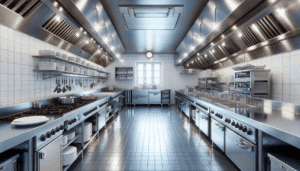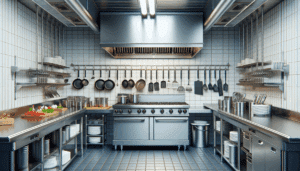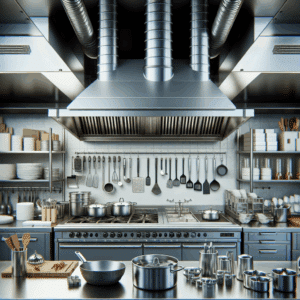Kitchen maintenance can seem daunting, especially when it comes to cleaning your Grease trap. At Utah Hood Cleaning, we understand the struggle many homeowners face. That’s why we’ve put together this handy guide to simplify the process. Dive in to learn how to effectively keep your kitchen running smoothly.
Understanding Your Grease Trap
A grease trap is essential for any kitchen, as it prevents fats, oils, and grease (commonly known as FOG) from clogging your plumbing. By trapping these substances, it helps maintain efficient water flow and prevents unwanted odors.
Keeping your grease trap clean is vital. Neglecting it can lead to clogged drains, unpleasant smells, and even costly repairs. With our guide, you’ll have the expertise needed to keep everything in top shape.
Why Regular Cleaning is Crucial
Cleaning your grease trap regularly isn’t just about maintaining cleanliness. It also ensures that your kitchen operates efficiently. Regular cleaning prolongs the longevity of your plumbing system.
Not only does it save you money in the long run, but it also helps avoid compliance issues with local regulations. Stay ahead of the game by making grease trap maintenance a priority.
Signs Your Grease Trap Needs Attention
Being aware of the signs indicating it’s time for a cleaning can save you much hassle. One obvious indicator is slow drainage. If your sink drains slowly, your trap might be full.
Another sign is foul odors emanating from your drain. These can signal a buildup in your grease trap. If you notice these signs, it’s time to act.
Safety Precautions Before Cleaning
Safety first! Before you start, ensure you have the necessary protective gear. This includes rubber gloves, goggles, and masks to protect against fumes.
Ventilate the area by opening windows and using fans. This helps in reducing the smell and making the task safer and more comfortable.
Gathering Your Cleaning Tools
To make the process smooth, gather all necessary tools before you begin. You’ll need items like a wrench, scraper, and a bucket for debris.
Having everything ready at your disposal can make the task efficient and less time-consuming. Preparation is key!
Step-by-Step Cleaning Guide
- Access the Grease Trap: Remove the lid carefully using a wrench. Ensure you do this slowly to prevent any splashing of trapped water or grease.
- Scoop Out the Grease: Use a small bucket or scoop to remove the solids from the trap. Aim to clear out as much as possible for effective cleaning.
- Scrape the Sides: Employ a scraper to remove residue from the trap’s walls. This step helps prevent future buildup.
- Flush with Water: Rinse the trap with warm water. This can help dislodge any remaining particles and keeps your trap fresh.
- Secure the Lid: Once cleaned, securely place the lid back on. Ensure it’s tightly fastened to avoid any leaks.
Disposing of Waste Properly
After cleaning, proper disposal of grease and debris is critical. Never pour grease down your sink or any household drain.
Instead, place the waste into a sealed container and dispose of it according to your local waste regulations. This prevents environmental harm and meets legal requirements.
Establishing a Cleaning Schedule
Consistency is key in effective grease trap maintenance. We recommend setting a regular cleaning schedule based on your kitchen’s usage level. For daily use, cleaning every one to three months is ideal.
A well-maintained grease trap reduces unexpected issues. Adapting this into your routine ensures your kitchen remains functional and worry-free.
When to Call a Professional
While regular maintenance is manageable, there are times when professional help is necessary. If you encounter persistent clogs, rising water levels, or unpleasant odors despite cleaning, it’s time to call in the experts.
Professionals have the tools and experience to handle tough situations. By relying on us at Utah Hood Cleaning, you’ll ensure peace of mind and expert care.
Get in Touch with Us
If you’re feeling overwhelmed or need assistance, we’re here to help! Contact Utah Hood Cleaning by phone # 801-853-8155 or Request a Free Quote.




